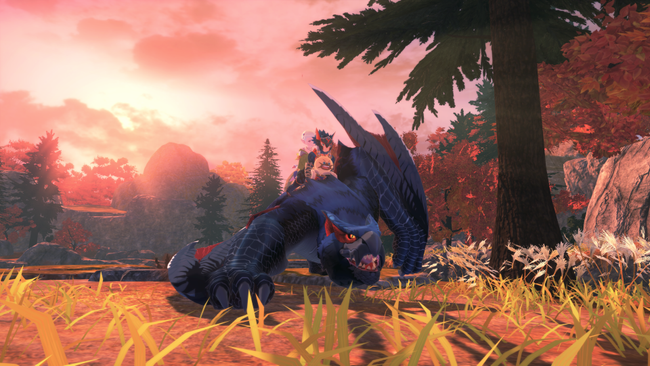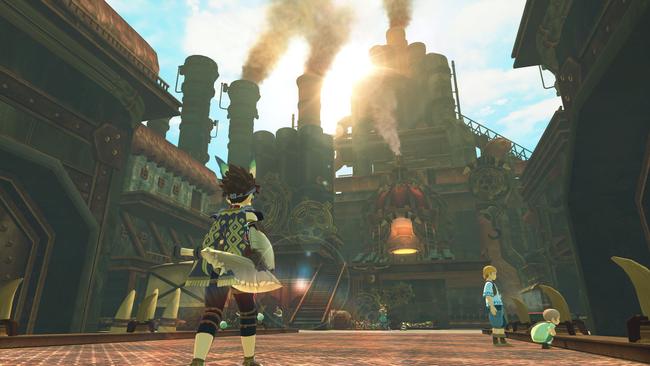
Monster Hunter Stories 2 Review
As cliche as it is, some JRPGs are just like comfort food. They're not particularly outstanding, but they offer just the right mix of gameplay, story, and overall vibes to make it easy to devour them - even if they might not stick with you as long as some of the greats of the genre. Monster Hunter Stories back on the 3DS was a comfortable, if not astounding RPG - a nice first attempt at the monster-collecting sub-genre filled with the likes of Yokai Watch, Digimon, and the ever-popular Pokemon. All Monster Hunter Stories 2: Wings of Ruin needed to do was improve upon an already solid foundation, and to give players a reason to give the spinoff another shot. In that sense, it more than succeeds.
As you might've gathered, Monster Hunter Stories 2 is the iterative sequel. While Wings of Ruin makes a number of changes to improve the experience, fundamentally they're both very much the same type of game at their core. An expansion on existing ideas and frameworks, rather than a complete rewrite.
If you're not already familiar with Monster Hunter Stories' main gameplay loop, the name of the game is working together with monsters instead of just mercilessly slaughtering them. In practice, that means stealing their young, too. Across the overworld, you'll find randomly spawning Monster Dens, which are randomly generated and will include a nest from which you can gather eggs that you can bring back to town and hatch. These dens can either be empty, have a specific monster sleeping at them, or could even have an active and awake monster on the prowl.

While there are intricacies to Monster Hunter Stories 2's battle system, the meat and potatoes of party building is already decided upon gathering one of these eggs. The way that you add new monsters to your party is through inspecting eggs within a monster's den, and your companion Navirou will help let you know the characteristics of the egg that you've gathered. An egg's pattern will always let you know what type of monster is inside it, with specific patterns denoting a monster's classification - and the coloration helping narrow down exactly which monster will pop out once it hatches. Details like weight and smell will clue you in to how many locked slots will be on a monster's "bingo board" - more on that later - and how many "genes" are already filled in. Eggs with a glow not only tend to have more advantageous combinations of those two attributes, but will also offer a buff to a monster's base stats of HP, Attack, and Defense.
The specific of gathering multiples of the same monster in order to splice their genes into the ultimate Monstie is a complicated affair, and where the majority of the game's playtime will likely come into play - particularly at the endgame. For most players, however, it's all fully optional. All you need to know is that lining up genes of either a specific element or attribute in a line will offer a damage multiplayer for skills using either that element or attribute. What I'd imagine more players will care about is the way in which certain monsters tie into the battle system, and how you'll gain access to new Field Actions depending on the Monstie companions you've raised.
Monster Hunter Stories 2's battle system is fundamentally the same as it was in the first game - both your monsters, and whichever you'll find yourself up against, have a pattern - denoted by a Red, Green, or Blue symbol within their info in the field notes. These correspond with one of 3 different types of attacks - Power, Technical, and Speed respectively. The key to successful battles is to understand which monsters will use what types of attacks, and when - and to send out monsters to counter their natural tendencies. If the monster you're fighting is a hothead, then a speedier monster will likely beat out their attacks - and the opposite might be true if your Speed attack goes up against a monster that prefers to use Technical ones.

Essentially, it's rock-paper-scissors. It's not exactly deep, most of the time. Boss battles are the only real-time that things can get spicy, as not only will you have to consider sending out the right monster at the right time, but you'll run into monsters with different body parts that will take greater damage from specific weapon types from your character. Especially later on, this becomes crucial - by the time you're at the endgame, you'll be juggling between your up-to 3 equipped weapons, several monsters, and a variety of tactics in order to keep your party alive. While simpler monsters might only act one way when they're in a normal mood, and another when they're angry - bosses will usually shuffle between 3 different phases, each with their own methods to know them out of it - or to help mitigate damage.
The ways in which the combat has improved from the first game sound small on paper, but they really do go a long way towards helping the game have some stronger staying power. First off, you've got more weapons to contend with this time around - Gunlance and Bow, to compliment the rest of the returning weapons. These come with a new damage attribute, which means just that little more depth when considering which weapon to use against which monster. Each of the game's 6 weapon types also has its own playstyle, sort of mimicking their playstyles in the mainline games. Greatsword has a charge meter that incorporates the 3 hit combo for its strongest attack - Gunlance can gain shells with each attack, and then spend them on skills that have an opportunity to greatly raise your Kinship meter.
Kinship is sort of like your MP in a traditional RPG. You gain some from landing attacks, and more for successfully winning on the exchange. If you can manage to coordinate your attack with your Monstie's, you'll gain even more than that. Charge from the meter can be spent to activate skills for your equipped weapon, to command your monster to use a specific skill of theirs - particularly useful when you don't want to have to swap out a monster for a phase-change in a fight, but have an alternate skill they can use - and when maxed out, to ride your monster. Riding your monster will replenish all of a hunter's PC, and heal a percentage of your Monstie's health. Attributes are buffed when riding a monster, and every time that you successfully win at an exchange, the level of your Kinship Skill - an all-powerful attack that features a unique animation for each monster - will increase.
The other big change with battles this time around is the addition of guest party members. For each of the game's chapters, you'll team up with either another Rider and their Monstie, or with a Hunter. All in all, it's enough to help keep fights engaging through the game's roughly 40 to 50 hours of playtime.

Dungeons are once again mostly made up of the same repeating rooms. Rooms that both Monster Dens and Everdens - optional dungeons where you can gather currency for optional items and equipment - also make use of, sometimes to the point where it feels like you might see the same room dozens of times. The overworld is interesting enough, but Field Abilities haven't seen a meaningful upgrade from the 3DS. You can jump, you can swim, you can fly, all depending on the monsters in your party - but besides the latter, there's no meaningful reason to engage with rest besides for 100% completion. You are never required to have a specific Field Skill, and you're never really given a reason to ultimately care - besides the act of riding your favorite monster.
That is, of course, a big draw. Riding fan favorites like Tigrex, or Nargacuga, or Zinogre is all well and good - and the game certainly tries to get you to care for Razewing Ratha, too. Much like with the first game, however, I do find it ironic that for the second time the story is probably the game's weakest link. The disjointed manner for how it treats Monsters, and how it invents and then throws away conflicts felt unnecessary. It's at least a little disappointing after Capcom made a big deal about pushing the game for a broader, not to mention older, audience.
For those of us that can find an interest in the eugenics of Monstie raising, there's a decent amount of postgame content to grit your teeth on. Upon finishing the game, High Rank monsters will begin to dot the map - alongside High Rank and Super Rare High Rank Monster Dens. Some specific monsters can only be found by exploring these dens, and you're more than given a reason to train a team of highly engineered killing machines to tackle harder and harder challenges. These monsters, in turn, have genes that you might want to port over to other monsters. It's almost a similar sort of experience to gathering materials with specific attributes for synthesis in an Atelier game. Except that all the materials, synthesis items, and finished products are Monsters - all the way down.

Though I might have some issues with the story itself, you won't hear me complain about a specific aspect of it - cutscenes. I don't know how to stress this enough without actively showing them to you, but developer Marvelous and animation studio Marza Animation Planet absolutely popped off here. Even though I felt that many aspects of the story were undercooked, the cutscenes accentuating key story moments were more than enough to keep me engaged, and raring to go for that next story beat. Of course, it's not just the cutscenes that have seen a bump in quality with the jump to new hardware. The overall presentation for the game is clean, and at least on PC, runs smoothly without a hitch on even more modest hardware.
I greatly enjoyed my time with Monster Hunter Stories 2, but if this review reads more restrained than the score might make you feel - it's because as much as I enjoyed the game, it still has its fair share of flaws, and I'm unsure if players with less of a history with the franchise might be willing to overlook them. Your mileage may vary, but one thing's for sure - it's great to see that Monster Hunter: Stories isn't dead, and hopefully this is just one of many more sequels to come.